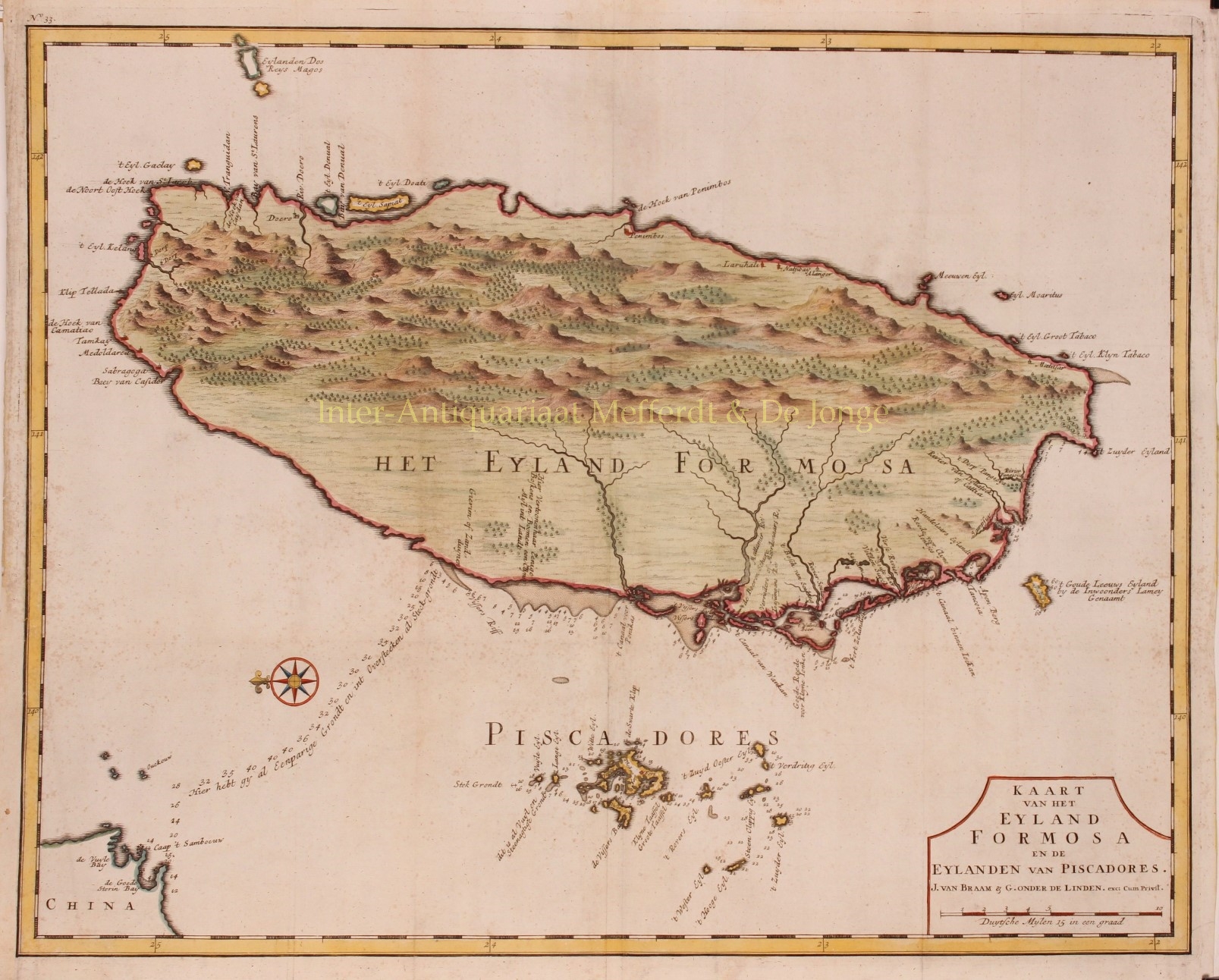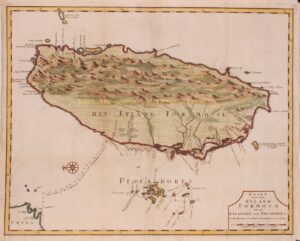“Kaart van het Eyland Formosa en de Eylanden van Piscadores”, copper engraving from François Valentijn’s “Oud en Nieuw Oost-Indien”, made by Jan van Braam and published in Dordrecht by Gerard onder de Linden in 1724-1726. Coloured by a later hand. Size: 44 x 56 cm.
The VOC factory (as they were called) in Tayouan was to become the second-most profitable factory in the whole of the Dutch East Indies (after the post in Japan). Benefitting from triangular trade between themselves, the Chinese and the Japanese, plus exploiting the natural resources of Formosa, the Dutch were able to turn the bay in the southwest into a lucrative asset.
The original intention of setting up Fort Zeelandia at Tayouan (Anping) in southern Formosa was to provide a base for trading with China and Japan, as well as interfering with Portuguese and Spanish trade in the region. Goods traded included silks from China and silver from Japan, among many other things.
After establishing their fortress, the Dutch realised the potential of the vast herds of the native Formosan sika deer roaming the western plains of the island. The tough deer skins were highly prized by the Japanese, who used them to make samurai armour. Other parts of the deer were sold to Chinese traders for meat and medical use.
After Chinese people settled in Taiwan, they started to grow tea on less fertile hillsides where rice could not be cultivated. Although sugar cane was a native crop of Taiwan, Chinese immigrants brought and introduced the technique to turn the raw sugar cane into sugar granules. Sugar then became the most important export item and made a far higher profit than the sugar produced in Java. Another one of Taiwan’s major export items was sulfur collected from near Keelung and Tamsui.
Taiwan, especially Taoyuan, became an important transshipment center for East Asian trade networks. The products from Japan, Fukienn, Vietnam, Thailand and Indonesia were shipped to Taiwan, and then exported to other countries as the markets demanded. The Dutch exported amber, spices, pepper, lead, tin, hemp, cotton, opium and kapok from Southeast Asia through Batavia to China by way of Taiwan and carried silk, porcelain, gold, and herbs from China to Japan and Europe via Taiwan.
This the first printed map of Taiwan is oriented to the east and based on Johannes Vingboons’ 1640 manuscript map of Formosa. Vingboons in turn, based his map upon information gathered during the brief Dutch occupation of Formosa between 1624 and 1662. Valentijn’s map covers the entire island as well as the nearby Pescadores, now known as the Penghu Islands, and the nautical route to Chinese coastal province of Fujian. Soundings appear around the Pescadores, along the west coast of Taiwan, and extend to the Chinese coast.
Price: SOLD





